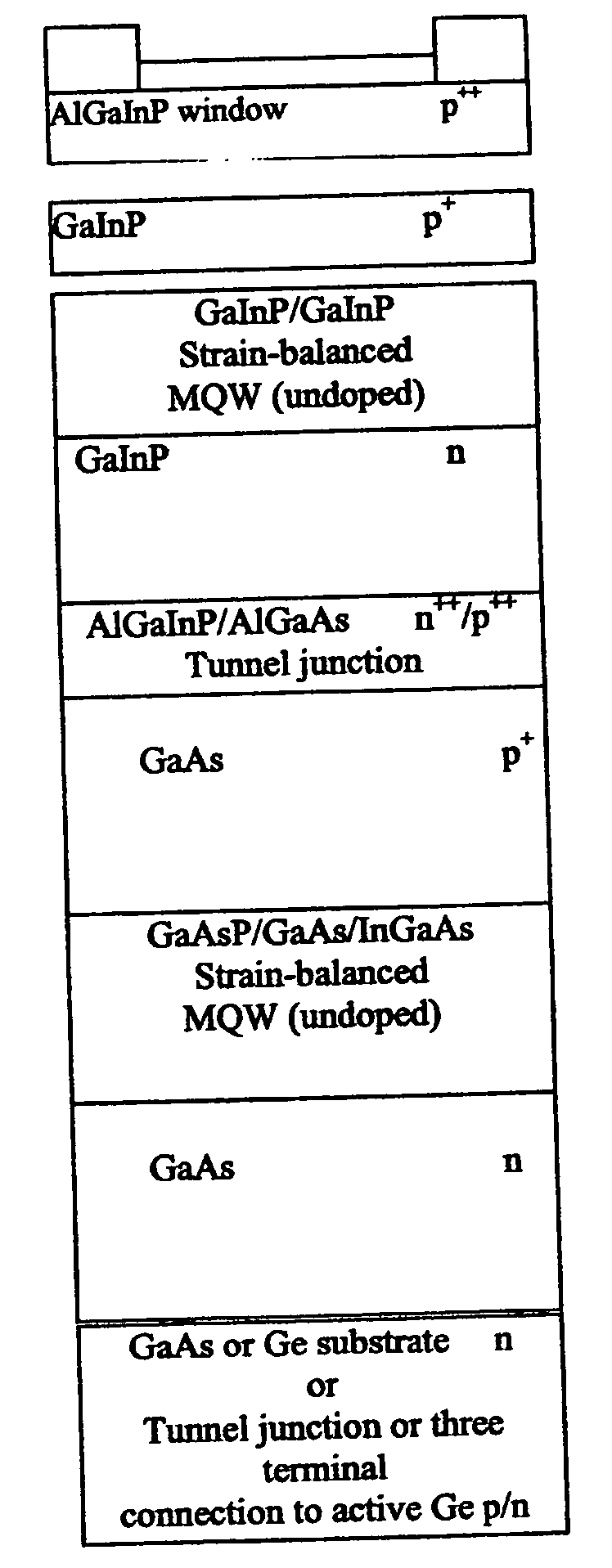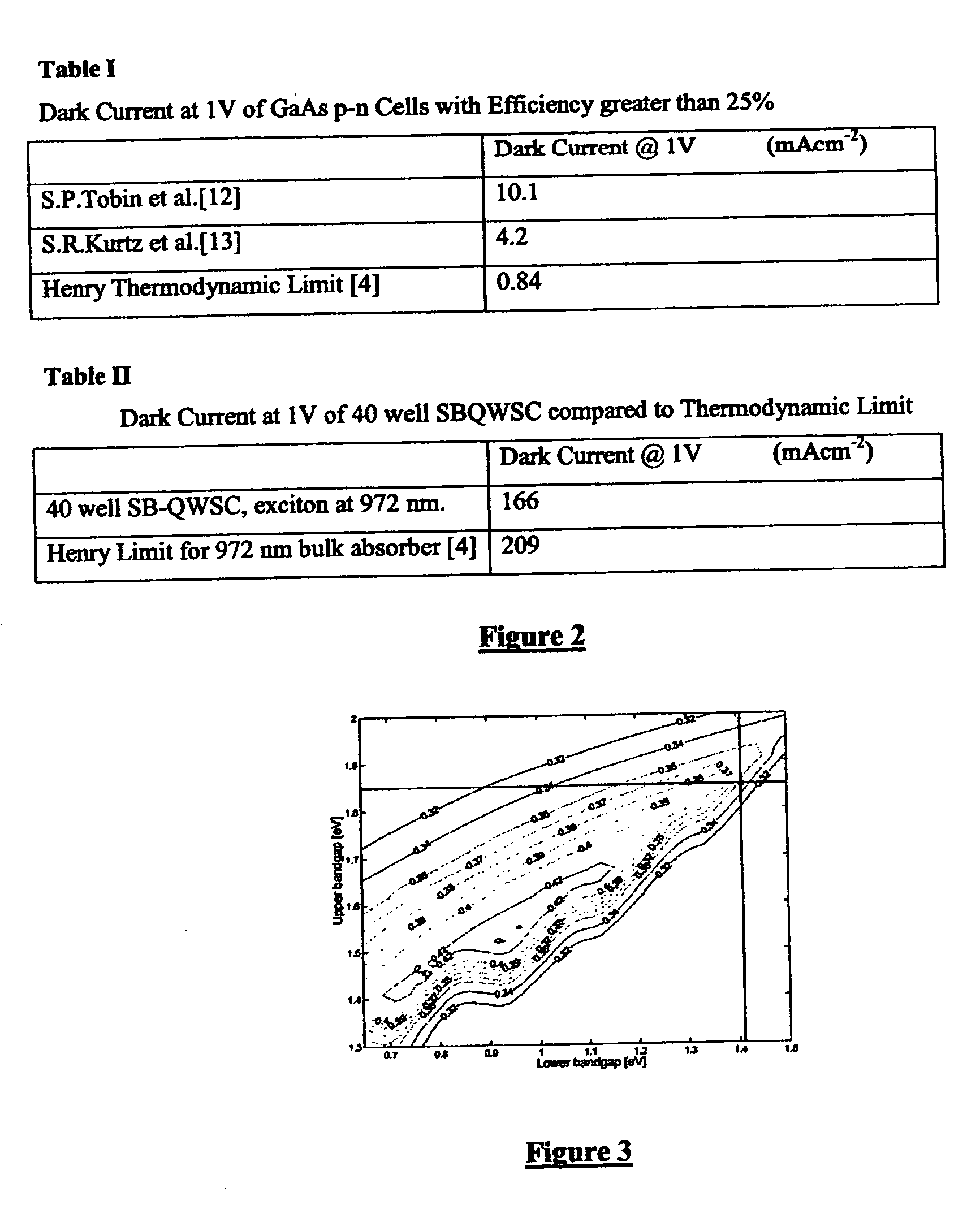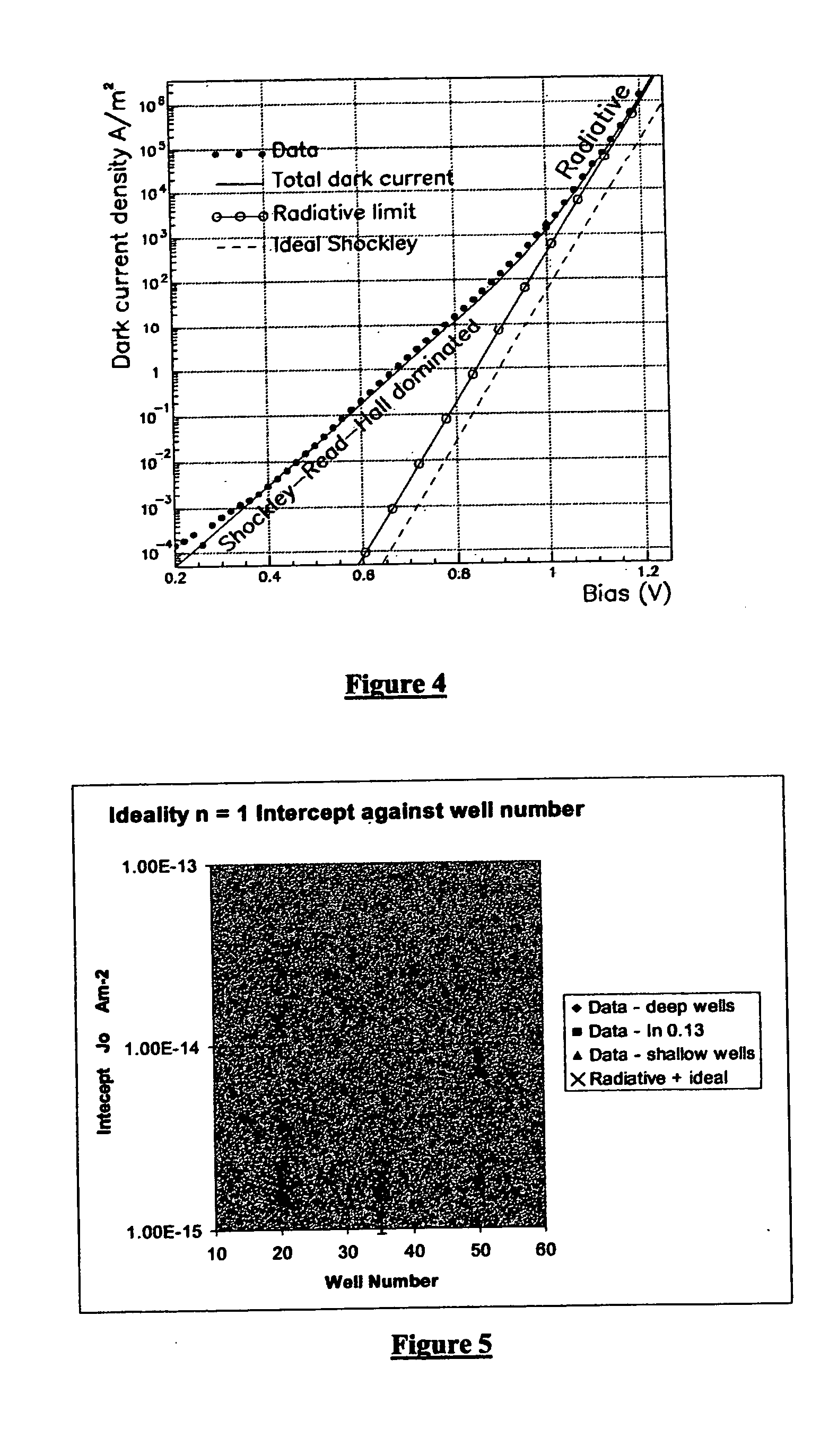Method of operating a solar cell
a solar cell and solar energy technology, applied in the field of solar cells, can solve the problems of low recombination loss, poor quality of materials, and still present non-desired recombination mechanisms, and achieve the effect of reducing stress
- Summary
- Abstract
- Description
- Claims
- Application Information
AI Technical Summary
Benefits of technology
Problems solved by technology
Method used
Image
Examples
Embodiment Construction
[0035] Here we describe a photovoltaic cell, strain-balanced quantum well solar cell (SB-QWSC) that can substantially simultaneously fulfil the absorption edge and recombination conditions previously discussed. This cell can achieve both conditions with current III-V or II-VI materials. One embodiment of the SB-QWSC is that it has a p and n doped region formed from GaAs and an undoped i-region formed from a GaAs1-xPx / InyGa1-yAs strain-balanced quantum well system where the P composition (x) and the In composition (y) are chosen to ensure that the GaAsP barrier has higher band-gap than the bulk region of the cell and that there is minimum shear force between adjacent layers [6]. The difference in the band gap of the deepest well in the quantum well structure and the band gap of the surrounding bulk semiconductor regions is greater than 60 meV, the bandgap of the bulk semiconductor being greater. The typical number of wells in such a system is around 50. As a result of strain-balancin...
PUM
 Login to View More
Login to View More Abstract
Description
Claims
Application Information
 Login to View More
Login to View More - R&D
- Intellectual Property
- Life Sciences
- Materials
- Tech Scout
- Unparalleled Data Quality
- Higher Quality Content
- 60% Fewer Hallucinations
Browse by: Latest US Patents, China's latest patents, Technical Efficacy Thesaurus, Application Domain, Technology Topic, Popular Technical Reports.
© 2025 PatSnap. All rights reserved.Legal|Privacy policy|Modern Slavery Act Transparency Statement|Sitemap|About US| Contact US: help@patsnap.com



